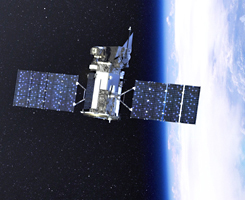On 4 March 2011, the Aerosol Polarimetry Sensor (APS) was lost as a consequence of the failed launch of the Glory Mission. On 6 March 2011, Dr. Michael Freilich, Director of the Earth Science Division, Science Mission Directorate, NASA Headquarters, directed the Glory APS Science Team to perform a comprehensive study intended to develop and evaluate the science rationale for an APS reflight.
The document
Glory APS Reflight Report:
The Need for Aerosol and Cloud Measurements from Space: Essential Contributions from a Rapid Reflight of the Aerosol Polarimetry Sensor (PDF)
describes the "real problems to be solved, and how the APS-2 mission will advance the solution, making unique and essential contributions."
Background
Glory was to be a remote-sensing Earth-orbiting observatory designed to achieve two primary mission objectives. One was to collect data on the physical and chemical properties as well as the spatial and temporal distributions of aerosols. The other was to continue collection of total solar irradiance data for the long-term climate record. The mission ended March 4, 2011, when the spacecraft failed to reach orbit following its launch from Vandenberg Air Force Base in California.
The Glory mission was intended to respond to the U.S. Climate Change Science Program (CCSP) by continuing and improving upon NASA's research of the forcings influencing climate change in the atmosphere. As summarized below, measurements produced by this mission and the scientific knowledge these observations were to provide are essential to predicting future climate change and its man-made component, and to making sound, scientifically based economic and policy decisions related to environmental change.
The science objectives of the Glory mission included:
1. The determination of the global distribution, microphysical properties, and chemical composition of natural and man-made aerosols as well as clouds with accuracy and coverage sufficient for a reliable quantification of the aerosol direct and indirect effects on climate;
2. The continued measurement of the total solar irradiance to determine the Sun's short-term and long-term effects on the Earth's climate.
The Glory mission's scientific objectives were to be met by implementing two separate science instruments, one with the ability to collect polarimetric measurements along the satellite ground track within the solar reflective spectral region (0.4 to 2.4 micrometers) and one with the ability to monitor changes in sunlight incident on the Earth's atmosphere by collecting high accuracy, high precision measurements of total solar irradiance, aboard a low Earth orbit satellite. These instruments were the Aerosol Polarimetry Sensor (APS) and the Total Irradiance Monitor (TIM). Additionally, a cloud camera system was to provide images that would allow the APS scans along the spacecraft ground track to be put into spatial context and to facilitate determination of cloud occurrence within the APS instantaneous field of view.
Reference Documents
Hansen, J., L. Nazarenko, R. Ruedy, Mki. Sato, J. Willis, A. Del Genio, D. Koch, A. Lacis, K. Lo, S. Menon, T. Novakov, Ju. Perlwitz, G. Russell, G.A. Schmidt, and N. Tausnev, 2005: Earth's energy imbalance: Confirmation and implications. Science, 308, 1431-1435, doi:10.1126/science.1110252.+ Read more
Kopp, G., and G. Lawrence, 2005.
The Total Irradiance Monitor (TIM): Instrument design.
Solar Phys. 230, 91-109.
+ View PDF (1 MB)
Mishchenko, M., 2006:
Glory.
In Earth Science Reference Handbook: A Guide to NASA's Earth Science Program and Earth Observing Satellite Missions.
C.L. Parkinson, A. Ward, and M.D. King, Eds.
National Aeronautics and Space Administration, pp. 141-147.
+ Read more
Mishchenko, M.I., B. Cairns, G. Kopp, C.F. Schueler, B.A. Fafaul, J.E. Hansen, R.J. Hooker, T. Itchkawich, H.B. Maring, and L.D. Travis, 2007:
Accurate monitoring of terrestrial aerosols and total solar irradiance: Introducing the Glory mission. Bull. Amer. Meteorol. Soc., 88, 677-691, doi:10.1175/BAMS-88-5-677.
+ View PDF (3.5 MB)
Mishchenko, M. I., B. Cairns, J. E. Hansen, L. D. Travis, R. Burg,
Y. J. Kaufman, V. Martins, and E. P. Shettle, 2004.
Monitoring of aerosol forcing of climate from space: analysis of measurement
requirements. J. Quant. Spectrosc. Radiat. Transfer 88, 149-161.
+ Read more
Note: PDF documents require a special viewer such as the free Adobe Reader.
NASA Video
Related multimedia on the NASA portal.
Latest News
2013-02-20: NASA Releases Glory Taurus XL Launch Failure Report Summary
Contacts
Michael Mishchenko
Project Scientist
NASA Goddard Institute for Space Studies
2880 Broadway
New York, NY 10025
Bryan Fafaul
Project Manager
Code 426
NASA Goddard Space Flight Center
Greenbelt, MD 20771
Hal Maring
Program Scientist
Radiation Sciences Program
Earth Science Division
Science Mission Directorate
NASA Headquarters
300 E St. SW; Mail Suite 3B74
Washington, DC 20546-0001
Joy Bretthauer
Program Executive
Earth Science Division
Science Mission Directorate
NASA Headquarters
300 E St. SW; Mail Suite 3N73
Washington, DC 20546-0001








